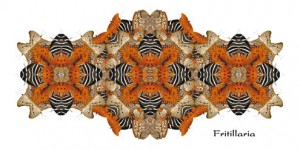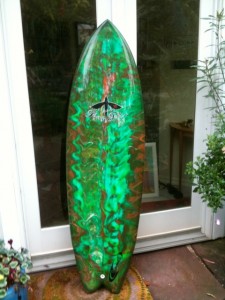Butterflies in Motion
recent work on fabric and paper
by
Jennifer Clark
Join us for the Opening Reception
Jennifer Clark—Artist and Naturalist
by Carina Woudenberg and Deborah Clark
Whether she’s holding a pencil, paintbrush, or camera, Jennifer Clark—artist and naturalist—has spent most of her life visualizing, creating, and designing art in a variety of media.
“In my case, I’ve always had a propensity for taking things apart, and then rearranging, transforming, reconstructing, and transposing them,” Clark said. “I think this stems from being infinitely curious about how things work in combination with my desire to make life better, or at least different, somehow.”
“At age two, I became fascinated with what I could create with a simple pencil,” she remarked. “And, I have been making some kind of art ever since.”
Clark extended this early philosophy and has now applied it to her recent illustrations and photographs—gathering objects, especially from the natural world, most particularly butterflies—drawing, painting, or photographing them, and then further rearranging and transposing the images in transformative ways that engage people to see the objects and the world differently.
“For example, in my butterfly and caterpillar drawings and designs, I place emphasis on details that the naked eye doesn’t immediately perceive.” Clark said. “But, the details are really inherent in the insects themselves! If you examine an insect under a magnifying glass, you will discover the details and see that they are indeed there. By placing the emphasis where I do, people easily see this extraordinary complexity. When people then turn their attention next to a live butterfly, say, they can then see the same level of detail more easily.”
Clark graduated with high honors from Eastern Michigan University in 1983 where she studied painting in addition to black & white photography. In her final year at the university, Clark was awarded “Most Promising Senior” from the Michigan Foundation for the Arts. She was also granted the opportunity to apprentice with a former teacher and established artist, Charles McGee, who’s been referred to as “One of Detroit’s Greatest Treasures.”
“I was lucky enough to apprentice with Charles who really instilled in me that art is a way of seeing,” Clark said. “You can’t really teach art—it’s fundamentally about learning to see.”
As her drawing and painting skills increased, Clark dreamed of becoming a book illustrator. Growing up, she frequently concocted illustrations and cartoon drawings, hoping that her friends would write stories that she could then illustrate. Shortly after graduating from college, she got her wish. A friend and noted butterfly expert, Dr. Philip DeVries, was documenting the butterflies of Costa Rica when his camera equipment was stolen, including all the slides that contained all the images for his upcoming book.
DeVries sent Clark a letter asking if she would illustrate the butterflies to replace the missing photo images and she gladly accepted his offer. The book, The Butterflies of Costa Rica and Their Natural History, generated substantial interest and Clark was invited to illustrate a second volume, which studied the symbiotic relationship between ants and caterpillars and ultimately earned DeVries a MacArthur Fellowship.
Working on these illustrations merged Clark’s love of drawing and love of butterflies, which are now featured prominently in her work. “I’ve always been passionate about butterflies,” Clark ruminated. “I’ve just always loved them. I remember very distinctly I was just awed by this one butterfly as a child—a Mourning Cloak (nymphalis antiopa)—and still to this day that’s one of my favorite butterflies.”
Clark has created her intricate butterfly and flower patterns for nearly fifteen years. Her contemporary art form began as a way to decompress from the tight, scientific illustrations destined for book publication. The process begins somewhat chaotically by clipping her butterfly photos in Photoshop. She then organizes the different images by color, shape, texture, and line to create balanced schemas, or sections. After she’s happy with a particular section, she’ll work on mirroring, flipping, and using transposition often “cutting up” and rearranging smaller and smaller sections within the larger ones. It is a very complex, labor intensive, time-consuming process—one in which she revels.
“The process is what I love,” she noted. “It’s like working a puzzle—putting the pieces together in a way that creates a harmonic balance.”
Clark’s January 10 opening of “Butterflies in Motion” at Kelly Street Gallery in Half Moon Bay will feature her wall and paper prints along with her silk scarves—a more recent venture into wearable art—and her new fabric panels will drape from the ceiling. In addition, her cards and bookmarks will be offered.
The busy artist still searches for new ways to expand her work. She plans to use her designs as the basis for table cloths, napkins, and pillows, and would one day like to create an installation piece that makes use of an entire space—creating an environment for visitors to wander through and explore.
“I think the perfect epitaph for me would be ‘variations on a theme,’” Clark said. “And my theme seems to be transposition of whatever strikes my photographic fancy at any given moment.”
Jennifer Clark’s show runs from January 10 – 31 at the Kelly Street Gallery. The gallery is open every Sunday from 12 – 5 p.m. The “Butterflies in Motion” opening reception takes place from 1-4 p.m. For a private viewing or for more information contact Jennifer Clark at [email protected].





